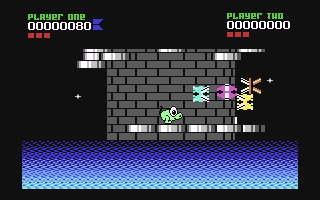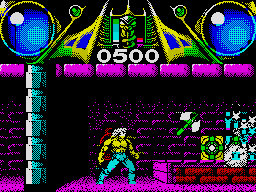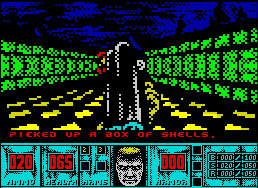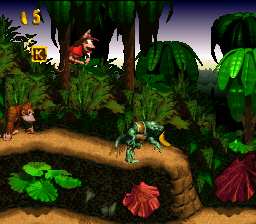
Games developers are illusionists. Convincing players to mentally conjure places, people and stories out of rudimentary arrangements of switches and blinking lights demands something more than just engineering skill. As hardware has grown ever more powerful and sophisticated, the need for creative sleight-of-hand has not diminished.
That whizzy new console may provide a leap in processing and effects over its predecessors, but the novelty quickly palls leaving developers searching for increasingly cunning techniques to make this year’s blockbuster outperform last year’s while constrained to the same hardware.
One of the deepest and nerdiest pleasures of the games enthusiast is discovering how the trick works. I can reel off some personal favourites from games I’m most familiar with, but to get a truly diverse view I plundered the collective RLLMUK Forum memory-banks in this thread. Read on for ten of the most celebrated examples of gaming smoke and mirrors (with YouTube links where applicable).
Elite
It would be impossible to write a piece like this without mentioning Bell and Braben’s seminal space opera, which to this day remains one of the most seemingly extraordinary feats of procedural content generation ever attempted. There is really no trick to Elite, it’s just an application of elegant, economical mathematics – in the same way that putting a ship in a bottle is ‘just’ the application of a series of patient, exacting manual operations. At a time when most bedroom programmers were making their first fumbling steps beyond BASIC on the early home micros, Elite’s developers were teasing new game features from handfuls of bytes of assembly code.

Aside from their formidable coding prowess, Bell and Braben’s genius was in realising that what they wanted to do was even achievable with the hardware of the day. A final flourish was to effectively play up the exploratory nature of the gameplay, pointing out (quite truthfully) that even the creators hadn’t explored all of the game’s universe and mischievously hinting at mythical encounters (the infamous Generation Ships) waiting somewhere in the void.
I tend to avoid claiming that any particular classic title is a game that everyone should play. (I’m all too aware that there are many so-called essential games that I have yet to play myself.) I do however believe that Elite is one of the fundamental games (in the same category as Tetris, Pac-Man, Space Invaders, Super Mario Bros and Doom) without experience of which it would be almost impossible to understand how games have evolved and the potential of which they are capable.
Nebulus
Nebulus was a fairly simple platform game from the mid-1980s, which was built around a clever visual trick: Through the use of small snippets of cyclical animation, Nebulus appeared to wrap its two-dimensional playing area around a cylindrical tower.

Whereas in most games the camera would pan horizontally, in Nebulus it appears to rotate around the tower, fixing the player character in the centre of the screen. This effect was so uncannily convincing it was appropriated for use as a set-piece by many platform game developers over the next decade, good examples being Mickey Mania, Castlevania Bloodlines (at 4’30”) and Battletoads.
Red Zone
Red Zone, developed by demo scene veterans Zyrinx, was one of a number of late-period games for the Sega Mega Drive which pushed the machine to the very limits of it’s capabilities, far beyond what Sega had originally envisaged when they were conservatively porting System 16 games to the system nearly a decade before. (Contemporary technical showcases included Toy Story, Comix Zone and Sonic 3D Blast.)

On startup the game proudly announces a list of technical features that it will attempt to demonstrate in realtime without the aid of additional hardware (or a safety net). After a brief full motion video(!) intro (alright, it’s literally black and white, but the very possibility of FMV was unheard of for a cartridge-based game at the time), we’re into the game proper – a helicopter-based arcade flight sim (not unlike Desert Strike), presented in fully rotating, polygonal 3D.
In truth, the game engine is closer to the rotating bonus stages in the first Sonic the Hedgehog (albeit vastly smoother and more sophisticated) than genuine Mode 7-style sprite rotation, but it’s still capable of dropping the jaws of those who doubt the capabilities of the Mega Drive. On top of all that, the game also includes on-foot levels which use parallax scrolling to create pseudo-polygonal walls. Which brings us to:
Parallax scrolling
Parallax scrolling (the effect of moving layers of background scenery at different speeds depending on their ‘depth’ in the scene) was one of the most widely used techniques of the 16-bit era. It produced an effect that was visually attractive without being excessively computationally expensive (on the consoles at least). Initially it was used for a few layers of very flat looking scenery (e.g. Shadow of the Beast), but in later games the field was cut into increasingly fine slices, ultimately giving a passable impression of a texture-mapped plane (the most famous example being the ground in Street Fighter II).

There are many, many games that used variations of this technique, but three that were noted in the discussion were Lionheart on the Amiga, Thunderforce IV on the Mega Drive (which makes particularly good use of moving the layers vertically as well as horizontally), and perhaps the ultimate application of the technique, the opening level of The Adventures of Batman and Robin.
Shadow of the Colossus
Yeah, so, uh, about that list of essential games I haven’t gotten around to yet. Due to having had only very sporadic access to a PS2, I’ve not played through SOTC yet. (*cough* – or Ico. *cough*) Luckily, this article has given me some insight into what it’s doing that’s so clever.

Most of the effects described are based on hard-nosed technical innovation, but the developers have picked from all the tools and techniques at their disposal and implemented just enough of each to be convincing perceptually while not overwhelming the PS2 hardware. Any one of the seamless world, HDR lighting and fur effects would be reason enough to commend a PS2 game as ambitious, but to have all of this and more is truly praiseworthy.
Savage
Before David ‘Shiny’ Perry* thrilled the world with Aladdin, Earthworm Jim, MDK and, erm, Enter the Matrix, he churned out over a dozen games for the ZX Spectrum. The most visually striking of these was Savage for Probe Software. Although the Spectrum was capable of full-colour graphics (hence the name), it was hampered by a limitation of only being able to display two colours in each 8×8 pixel block of the display. Most developers sidestepped this issue by making most of the playing area monochrome, thereby avoiding the dreaded colour clash.

Savage was one of the few games that took on the challenge of designing its graphics to work in colour. In magazine screenshots, it looked almost like an Amiga game. (It helped that magazine screenshots at the time were taken from blurry televisions with conventional cameras – and of course that Spectrum owners desperately wanted to believe.) The game also featured somewhat less impressive Space Harrier-style racing sections, as well as some of the slick sprite animation that would become Perry’s hallmark.
*Imagine how confusing it would be if he started wearing a bandana.
Spectrum Doom
If coming up with a convincing answer to Doom was beyond the capabilities of the Amiga (and it blatantly was), what chance did the Spectrum have? Well, not much to be honest, but this amazing video shows that with a sprinkling of familiar elements, the sympathetic player can be tricked into ignoring the enormous gaps.

Donkey Kong Country
There was some controversy over whether Rare’s prerendered platformer really counted as a good ‘trick’. Technically, the SNES wasn’t being asked to do anything out of the ordinary – all that was different was the amount of sprite data and how it had been produced. Even though most of the trickery was on behalf of the marketing (blurring the distinction between a 32-megabit cartridge and 32-bit consoles), Donkey Kong Country did look different enough to have reaped critical and commercial success (and even mainstream press attention) far beyond what just another platform game should have rightly expected.

Another World
Almost diametrically opposed to Donkey Kong Country is Delphine’s Another World. Both are games that strove for graphics and animation beyond what could be achieved with conventional means. Where DKC used render farms, Another World required a new realtime, polygonal graphical technique to be developed from the ground up. The eerily beautiful results were unlike anything that players had seen. The game’s creator, Eric Chahi, has explained the development process in some detail on the official site.

Top Gear Rally
The Game Boy Advance presented an irresistible challenge to a certain type of programmer. It was widely known to be just barely capable of rendering polygonal 3D graphics, so among the tide of cartoon-licensed platform games and shoddy Amiga ports we would occasionally see games that had obviously started their lives at tech demos, experiments to see just how far that weedy ARM processor could be pushed.

Top Gear Rally was one of the best of these. Other racing games usually made at least one big compromise from the outset – sprite-based cars, a flat Mode-7 track, or an excessively foreshortened horizon – but Top Gear Rally managed to deliver the whole package, and with a passable frame rate to boot.
One conclusion we can draw from all this is that developers have concentrated most of their effort and ingenuity on graphical techniques. This is not unexpected, as graphics have always played a dominant role in securing a game’s fortune. Even so, the discussion unearthed plenty of examples of non-graphical tricks, such as the AI in Halo, the emotional bond formed by naming the soldiers in Cannon Fodder, or the interpersonal dramas woven by even the crudest football management games (as well as Midwinter and, of course, Animal Crossing).
If you know of other good examples of gaming smoke and mirrors, why not leave a comment below?
Tags: another world, commentary, donkey kong country, doom, elite, graphics, nebulus, red zone, savage, shadow of the colossus, smoke and mirrors, top gear rally
